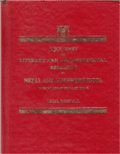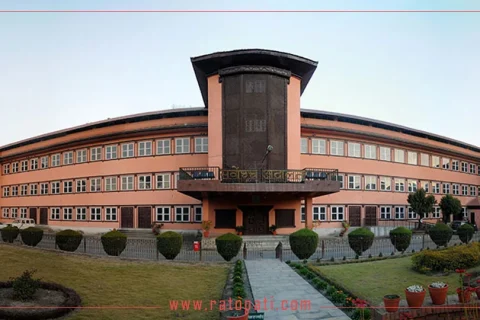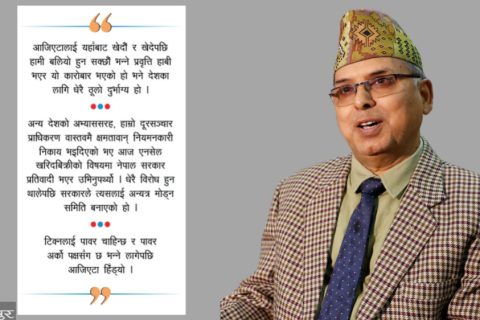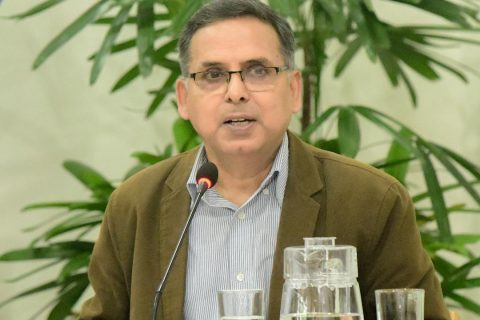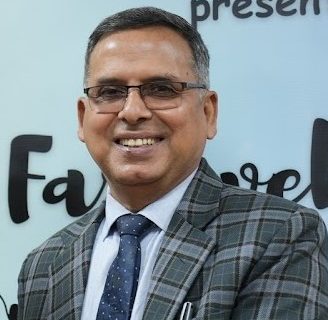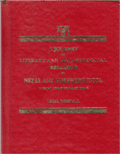
Cecil Bendal, A Journey of Literary and Archaeological Research in Nepal and Northern India During the Winter of 1884-85 (New Delhi: Asian Educational Services, 1991) (Originally published by Cambridge in 1886)
The book A Journey of Literary and Archaeological Research in Nepal and Northern India is a window on some very important aspects of the region’s rich cultural heritage. To a Nepalese reader, the study of inscriptions and colophons in this book is as much important as the study of several such historical objects by Daniel Wright, Bhagwanlal Indraji, Harapada Das Chattopadhyay, Sylvain Levi or K. P. Jayaswal in the past. It is a little yet remarkable piece of work.
Written by Cecil Bendall, a senior assistant at the University of Cambridge in the department of Oriental MSS from 1882 to 1893, the book is based on many Sanskrit manuscripts collected by the author for the University Library from north India, Nepal and Bombay with a grant from the Worts Fund in 1884–5. Before Bendall, in the 1870s, Daniel Wright, surgeon to the British Residency at Kathmandu Nepal, had collected a large number of Sanskrit manuscripts from Nepal. The new book of Bendall goes forward in this pursuit.
Bendall arrived in Kathmandu on November 9th of 1884. Before reaching Nepal, in India, he had consultations with Pandit Dr Bhagwanlal Indraji, whose researches in Indian antiquities, chiefly published in the Indian Antiquary, were well known both in India and Europe. In his prefatory statement, Bendall cautions that his study will seem “very partial and meager, if compared, for instance, with the admirable accounts and extracts given in the reports of Professors [Peter] Peterson and Ramakrishna Bhandarkar.” His visit to Kathmandu was short. Time was an important factor in the study. However, the book deals with classified lists of MSS personally collected by the author, tough list of MSS from Bombay, notes on particular MSS acquired, and notes on MSS in private possession. They bring many new facts about Nepal to light.
In Kathmandu, the author occupied the travelers’ bungalow belonging to the Government of India. He was first acquainted by the Resident with the Durbar explaining the purposes of archaeological search. His conversation with Pandit Indranand, the son of the late Pandit Gunanand, who helped Dr Daniel Wright to compile the History of Nepal was very helpful during his stay in Kathmandu. He helped Bendall with necessary guidance in his pursuit, especially in visiting several of the more distant localities of archaeological interest. He also profited much by the cordially rendered assistance of the Residency Mir Munshi Durga Sharan Mishra – an Indian native. Bendall was able to study numerous historical inscriptions and Nepalese literatures. He was also able to acquire several MSS in the valley.
The author was favoured with an interview with the Prime Minister Runoodeep Singh as well. In his preface to the book, Bendall remembers him, even though he was already slain during the disturbances in Kathmandu in November 1885. His remark that “whoever may be the new rulers, I trust they will be no less ready than the late Premier to afford a courteous reception to scholars” – shows that the Premier had been supportive to the research undertaken by him. He also sent him a number of coins to examine.
It is interesting to find from the book of Bendall that the Prime Minister of Nepal had a wonderful library. Bendall says: “I did not, however, enter the room in which the books are usually kept, but the whole collection, consisting of many thousands of MSS, was brought for me from the palace to the Durbar school building. So much trouble having been taken for my convenience, I made no enquiries as to the library room itself. Possibly the books are usually stored in one of those small rooms in which some of the best Indian collections of manuscripts (e.g. that in the splendid palace at Oodeypore) are even not kept and which contrast so curiously with European ideas of a commodious library. If this be the case, we must hope that educational progress, now, we trust, commencing in Nepal, will extend to the affording of still greater and more regular facilities for the study of the unique literature of the country preserved in this collection of MSS, in many respects, as we shall see, the finest in India.”
“As to the obliging library staff, I will only say that, however, the books are kept, they are found with a quickness that many a European library cannot equal.” Referring to Daniel Wright’s 1875 comment that the subject of schools and college in Nepal may be treated as briefly as that of snakes in Ireland, Bendall makes a point: “now we have at least one building in which both English and Sanskrit, and, as I have every reason to believe, well taught.”
At one point when he was visiting a temple of Narayan in ‘Khaumar-tol” in Bhadgaon, Bendall comments, “I regret that the crowd of idle followers who pursued me into the quiet little courtyard where the inscription, with some others of later date, was fixed, so disturbed the tenants of the ‘Math’ that, on returning to take a copy, I found the door closed against me. I generally found, I may observe, that, in Nepal, where Tibetans and Chinamen attract no notice, the mere dress of a European is sufficient to draw a train of 30 or 40 idlers, which would soon be doubled if an object like a photographic camera were produced.”
At another point he noted that his success in searching MSS was greater than I expected, but his negotiations were, he feared, interfered with by the officiousness of the Nepalese ‘Mukhiya’, or guard in attendance on him. As a general rule he noted he had nothing to complain of in the demeanour of these men; on the contrary, on several occasions, so far from acting as spies or standing in the way of his investigation, they were of great use in overcoming the stupid prejudices against strangers manifested especially by the Buddhists of this country.
In a footnote, Bendall points out that the people of Nepal seem stronger and far more active than most of the inhabitants of India. Appendix I of the book has a table of inscription with the original text and translation in English. Appendix II includes the revised chronological tables of the Kings of Nepal. The index of the book chiefly deals either the names of persons and places visited. The titles of MMS (not the name of their authors) are included, and printed in italics, in case where some special notice or citation is given in the text. They all make the book very useful to the studentd of Nepalese studies.

